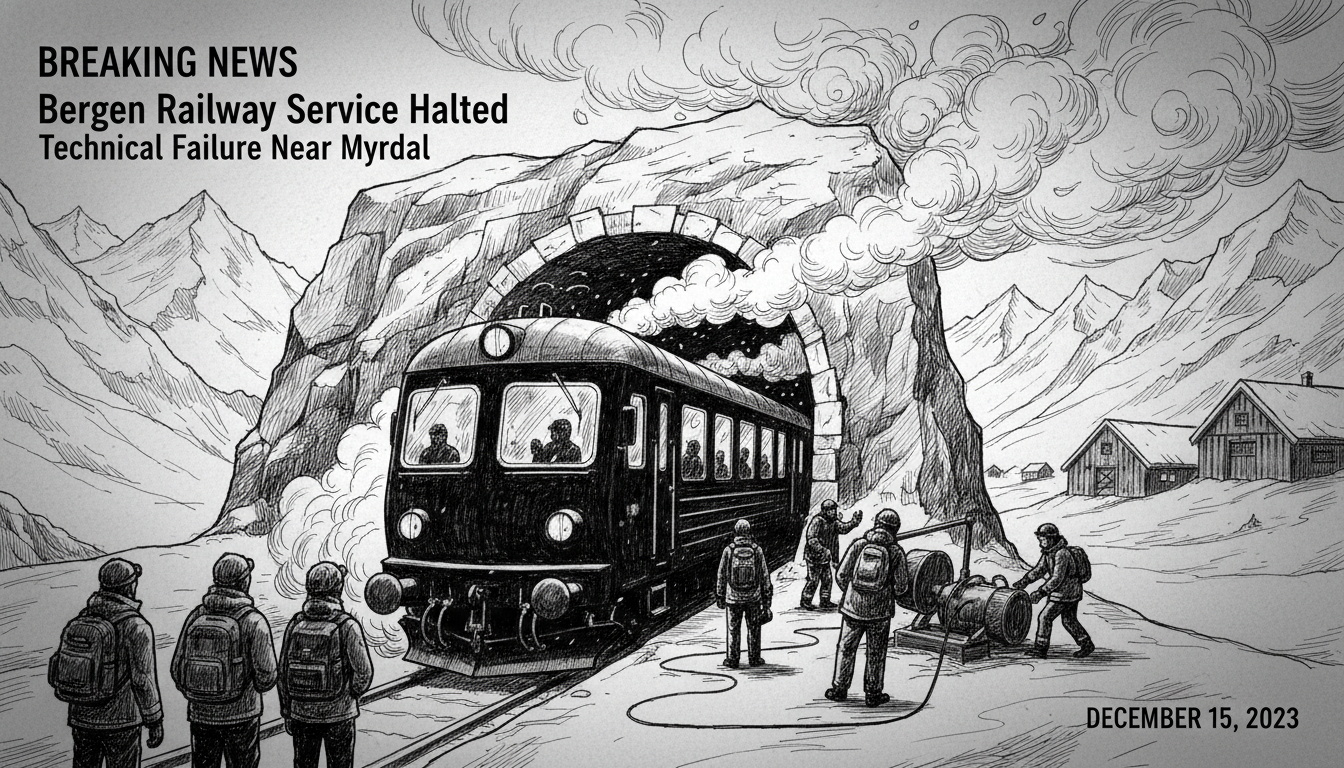The iconic Bergen Railway faces extended service disruptions after a passenger train experienced critical technical failure in a tunnel near Myrdal station. Approximately 150 passengers remain stranded aboard the immobilized Oslo-bound train while technicians work to identify the mechanical issue.
Railway authorities confirmed the incident began during the evening hours when the train lost air pressure and came to an unexpected stop. Emergency response teams have been dispatched to the remote mountain location where the train remains blocked inside the tunnel system. All passengers currently have electricity for lighting and heating systems according to official statements.
Initial reports suggest the train may have struck an object within the tunnel infrastructure. Technical crews are conducting comprehensive diagnostics to determine the exact cause of the failure. The Bergen Railway represents one of Norway's most vital transportation corridors, connecting western coastal regions with the capital through challenging mountain terrain.
This service disruption highlights the operational challenges facing Norway's critical infrastructure in extreme Arctic conditions. The Bergen Line traverses Europe's highest mountain plateau, exposing rail equipment to harsh weather patterns and complex maintenance requirements. Such incidents carry substantial economic implications for both passenger transport and commercial logistics moving between Norway's primary population centers.
Norwegian railway infrastructure has faced increased scrutiny following several high-profile service interruptions in recent years. The aging tunnel systems along the Bergen route require constant maintenance to meet modern safety standards. This latest incident raises questions about infrastructure investment priorities as Norway balances environmental commitments with practical transportation needs.
Passenger rail represents a cornerstone of Norway's commitment to sustainable transportation. The government has allocated substantial funding to railway modernization projects nationwide. Service reliability on key routes like the Bergen Line remains crucial for maintaining public confidence in green transportation alternatives.
Rail authorities have not provided a definitive timeline for restoring full service. Commuters and commercial transporters should anticipate continued delays along the western corridor. Alternative transportation arrangements are being coordinated for affected passengers as diagnostic work continues through the night.
The incident occurs during a period of heightened focus on Norwegian infrastructure resilience. Parliament recently debated increased funding for railway maintenance in the national transportation budget. This disruption may influence ongoing discussions about prioritizing critical infrastructure investments across Norway's challenging geography.
Norway's railway system operates as a state-owned enterprise with strict safety protocols. The country's mountainous terrain presents unique engineering challenges that require specialized maintenance approaches. Technical failures in remote locations like the Myrdal tunnel complex demonstrate the operational complexities of maintaining Arctic transportation networks.
Transportation officials emphasize that passenger safety remains the absolute priority during such incidents. All stranded travelers are reported to be in stable condition with basic amenities functioning normally. Emergency services remain on standby should evacuation become necessary, though officials express confidence in resolving the technical issue without requiring passenger transfer.

